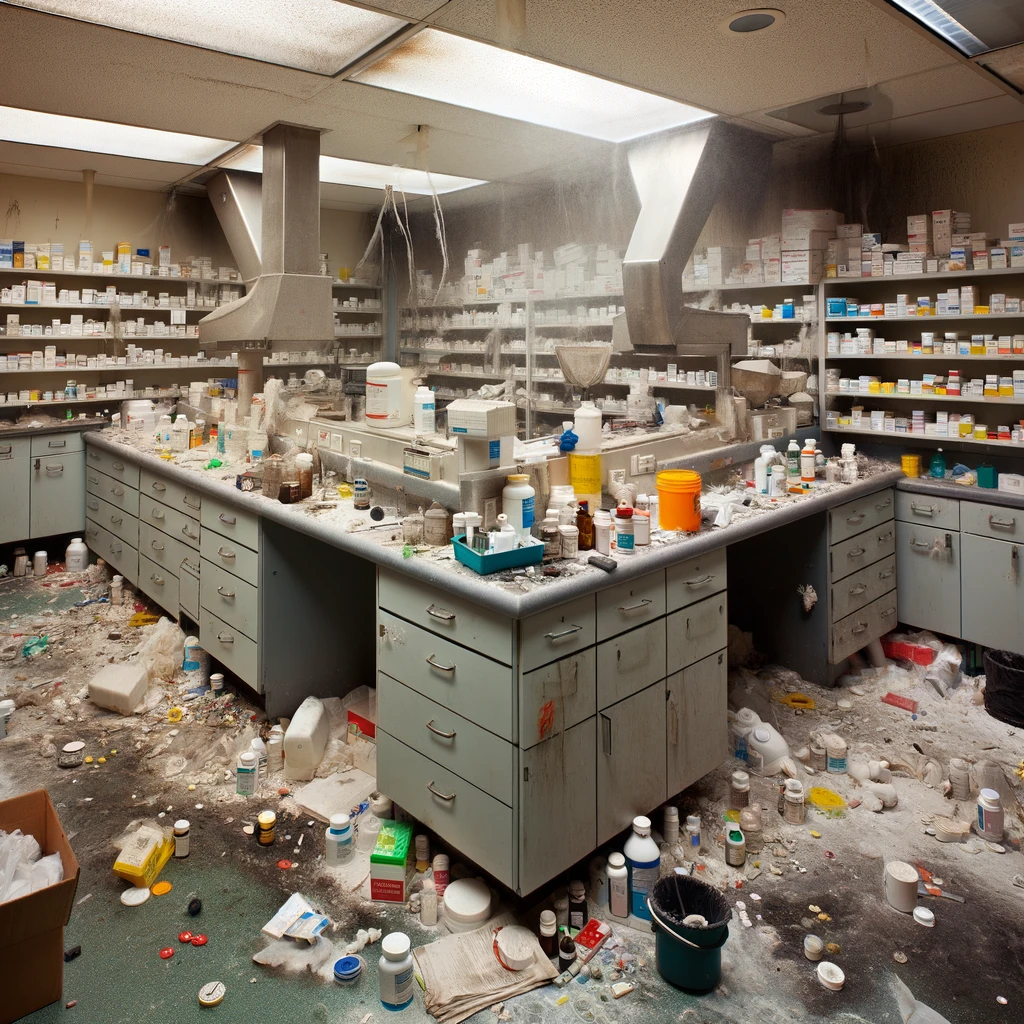
In the realm of hygiene and pharmacy cleanliness standards, terminology can sometimes lead to confusion. Two terms that often cause debate are “unsanitary” and “insanitary.” While both words relate to conditions that are not clean or hygienic, their usage, connotations, and nuances can differ. Understanding these differences is crucial for professionals in the pharmacy world. This article delves into the meanings, uses, and contexts of these terms, providing clarity and enhancing our communication about health and hygiene standards.
Unsanitary vs. Insanitary: Definitions and Usage
Both “unsanitary” and “insanitary” describe conditions that are unclean or unhealthy. According to Merriam-Webster, “unsanitary” is defined as “not sanitary” and is often used to describe environments or practices that fail to meet hygiene standards that indicate microbial contamination. “Insanitary,” on the other hand, is defined similarly as “not sanitary,” but its usage is less common and often refers to compromise by a non-pathogenic source.
Etymology and Evolution
The term “sanitary” originates from the Latin word “sanitarius,” meaning “of health.” The prefix “un-” in “unsanitary” suggests a direct negation of sanitary conditions. “Insanitary” follows a similar formation, with the prefix “in-” also serving as a negation. Historically, “insanitary” was more commonly used in British English, while “unsanitary” became prevalent in American English. Over time, “unsanitary” has largely overtaken “insanitary” in everyday usage, although both terms remain valid.
Contextual Differences
Everyday Use: In general conversation and media, “unsanitary” is more frequently used. For instance, you might hear about an “unsanitary restaurant kitchen” or “unsanitary living conditions.” This term tends to be more accessible and commonly understood by the general public.
Technical and Legal Use: “Insanitary” is often found in technical documents, legal texts, and regulatory language. For example, the U.S. Food and Drug Administration (FDA) uses “insanitary” in its guidelines and regulations concerning food production and handling facilities. The term “insanitary conditions” is explicitly mentioned in the Federal Food, Drug, and Cosmetic Act, highlighting its significance in legal contexts.
Implications and Connotations
Unsanitary:
- Connotation: The term often carries a straightforward connotation of dirtiness or lack of hygiene.
- Implications: It implies that conditions are visibly dirty or do not meet general cleanliness standards. For example, an unsanitary bathroom might have visible dirt, mold, or lack proper cleaning.
Insanitary:
- Connotation: This term can carry a more severe connotation, sometimes implying conditions that pose a significant health risk.
- Implications: Insanitary conditions might not always be visibly dirty but could include factors that make a space unfit for use, such as contamination with harmful bacteria or chemicals. In legal and regulatory contexts, “insanitary” often denotes a breach of specific health and safety standards.
Examples and Case Studies
To illustrate the differences, let’s look at some examples and case studies where these terms are used:
Example 1: Unsanitary Conditions A restaurant receives a health inspection report stating that its kitchen is unsanitary due to food residues on counters, improper waste disposal, and lack of handwashing facilities. The inspector’s use of “unsanitary” highlights visible cleanliness issues that need addressing to meet general hygiene standards.
Example 2: Insanitary Conditions A pharmaceutical manufacturing plant is cited for insanitary conditions in an FDA report. The issues include microbial contamination of products, inadequate sterilization processes, and improper storage of raw materials. Here, “insanitary” is used to emphasize the severe health risks and regulatory non-compliance, even if the facilities might appear clean to the naked eye.
Case Study: Flint Water Crisis The Flint water crisis in Michigan is an example where both terms could apply. The city’s water supply was contaminated with lead, creating a public health disaster. One could describe the situation as “unsanitary” due to the visible rust and discoloration in the water. However, “insanitary” might be more appropriate to emphasize the severe, systemic health risks posed by lead contamination.
Importance in Public Health Communication
Using the correct term is vital in public health communication to convey the appropriate level of urgency and severity. Miscommunication can lead to misunderstanding the gravity of a situation. For instance, describing a life-threatening contamination as merely “unsanitary” might downplay the seriousness, while using “insanitary” could accurately stress the need for immediate intervention.
Conclusion and Call to Action
Understanding that insanitary conditions can exist when things may appear to be clean underscores the vital need to minimize the introductions of pathogens in addition to other sources of contaminants. While most contaminants can be directly traced to humans in the compounding spaces, the environmental controls and purposeful preparation to enter our compounding spaces can minimize potential environmental concerns that compromise patient care.
Call to Action: For professionals in the pharmaceutical and healthcare industries, maintaining compliance with United States Pharmacopeia (USP) standards is critical. Katana RX offers a comprehensive solution to help you track and meet these requirements. By leveraging Katana RX’s tools, you can ensure that your facilities remain both sanitary and compliant, mitigating the risk of unsanitary or insanitary conditions. Visit terluminahealth.com to learn more about how our solutions can support your compliance and hygiene management efforts.
References:
- Merriam-Webster. (n.d.). Unsanitary. In Merriam-Webster.com dictionary. Retrieved from https://www.merriam-webster.com/dictionary/unsanitary
- Merriam-Webster. (n.d.). Insanitary. In Merriam-Webster.com dictionary. Retrieved from https://www.merriam-webster.com/dictionary/insanitary
- U.S. Food and Drug Administration. (n.d.). Insanitary conditions. Retrieved from https://www.fda.gov/insanitaryconditions
- Federal Food, Drug, and Cosmetic Act. (1938). Retrieved from https://www.fda.gov/regulatoryinformation/laws-enforced-fda/federal-food-drug-and-cosmetic-act-fdc-act
- Centers for Disease Control and Prevention. (2017). Flint water crisis. Retrieved from https://www.cdc.gov/nceh/lead/news/flint/
